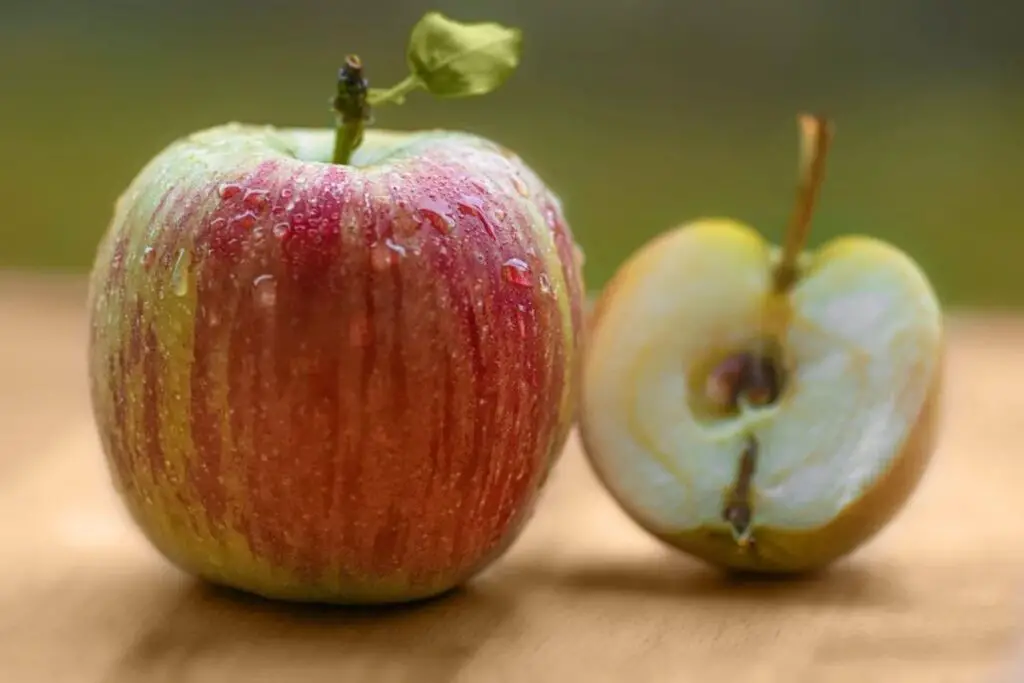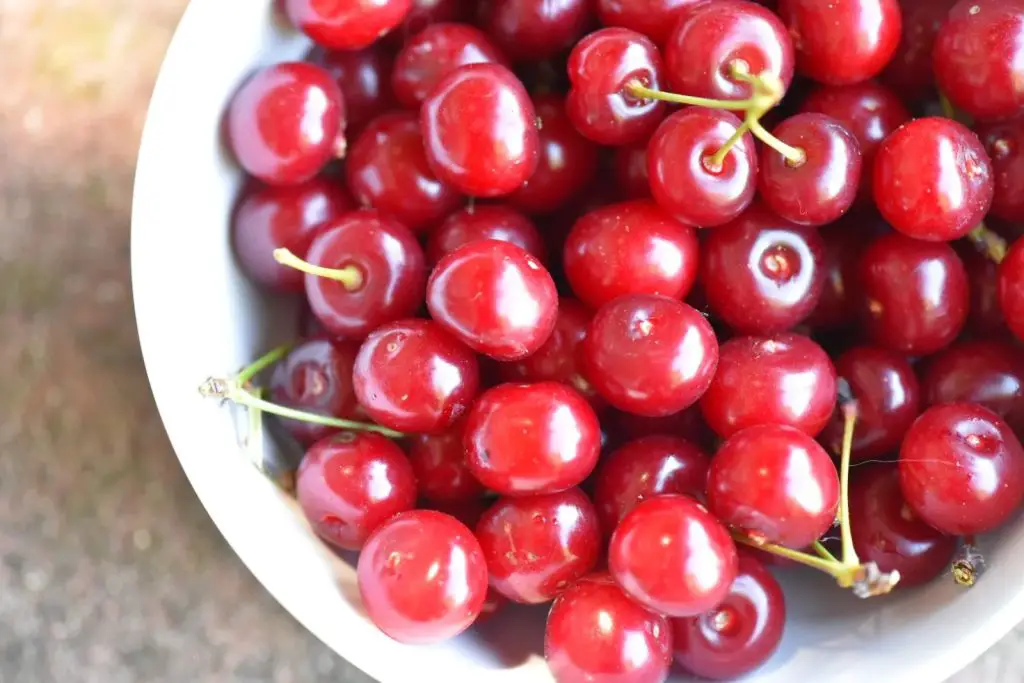Medjool dates, often referred to as the “king of dates,” are a luscious and decadent fruit that boasts a natural sweetness and rich caramel-like flavor. These large and moist dates, with their soft and chewy texture, have been treasured for centuries in Middle Eastern cultures for their delightful taste and numerous health benefits. Medjool dates are a popular choice for snacking on their own, adding to desserts and smoothies, or incorporating into savory dishes to impart a unique and luxurious sweetness. However, when purchasing Medjool dates in bulk or when harvesting a bountiful crop, it may be challenging to consume them all before they begin to dry out or lose their freshness. Freezing Medjool dates becomes a practical and effective method to preserve their tender texture and delectable taste, ensuring that each date remains moist and ready to elevate your culinary creations with its natural sweetness and nutrient-rich goodness, even when fresh Medjool dates are not readily available or when you wish to enjoy these indulgent fruits at your convenience. In this guide, we will explore the best practices for freezing Medjool dates, allowing you to savor their delightful taste and enhance your culinary repertoire with the essence of these exquisite and healthful fruits, whenever you desire, without the need for a fresh purchase or harvest from your local market or date palm plantation.
Here are the simple steps to freeze medjool dates:
Step 1: Choose Fresh Medjool Dates
Selecting fresh Medjool dates is crucial when preparing them for freezing. The quality of the dates at this initial stage will significantly impact their taste, texture, and overall freezer life. Here’s why choosing fresh Medjool dates is essential:
- Taste and Flavor: Fresh Medjool dates have a naturally sweet, caramel-like flavor that makes them a delightful treat. Their sweetness intensifies as they ripen, and choosing ripe dates will ensure that their delicious taste is preserved even after freezing.
- Texture: High-quality, fresh Medjool dates have a soft and chewy texture, which is highly desirable. They should not be too dry or too hard. This texture will be retained when they are properly frozen and thawed.
- Nutrient Content: Fresh Medjool dates are packed with essential nutrients such as fiber, potassium, magnesium, and vitamins. By selecting fresh dates, you ensure that these valuable nutrients are preserved and available in your frozen supply.
- Shelf Life: Dates that are already on the verge of spoilage will not last long in the freezer. It’s crucial to freeze them while they are fresh to maximize their shelf life and avoid wasting any overripe or spoiled dates.
To choose the best Medjool dates for freezing, follow these tips:
- Plumpness: Look for dates that are plump and well-rounded. Avoid any dates that appear shriveled or wrinkled, as they may have lost their moisture content.
- Softness: Gently squeeze the dates to check for their softness. Fresh Medjool dates should yield slightly to pressure but not be overly mushy.
- No Signs of Mold: Examine the dates closely and ensure there are no visible signs of mold or any other kind of spoilage. Mold can spread quickly and affect nearby dates in the package.
- Fresh Aroma: Smell the dates to detect any off-putting odors. Fresh Medjool dates should have a pleasant, sweet aroma, indicating their ripeness and quality.
Step 2: Wash the Medjool Dates
Washing the Medjool dates is a crucial step before freezing them. While these dates are usually clean and safe to eat straight from the package, giving them a quick rinse helps remove any dirt, dust, or handling residue that may have accumulated during transportation or storage. Here’s why washing the Medjool dates is important:
- Hygiene: Washing the dates under cool running water ensures that any surface impurities, such as dust or dirt, are removed. This step is especially important if you plan to eat the dates without peeling them, as it reduces the risk of consuming any potential contaminants.
- Preservation: By gently rinsing the dates, you also remove any natural residues, such as sugar or stickiness, that might be present on their surface. These residues can contribute to the formation of ice crystals or freezer burn during the freezing process.
- Prevent Freezer Burn: Excess moisture on the surface of the dates can lead to freezer burn, which affects the taste and texture of frozen foods. Freezer burn occurs when water molecules on the surface of the dates turn into ice crystals, causing dehydration. Patting the dates dry after washing minimizes the risk of freezer burn and helps retain their freshness and quality.
Here’s how to wash Medjool dates properly:
- Place the dates in a colander or a fine-mesh strainer.
- Hold the colander under cool running water, ensuring that all the dates are evenly exposed to the water flow.
- Gently agitate the dates with your fingers or move them around in the colander to dislodge any dirt or debris.
- Continue rinsing the dates for about 10-15 seconds to ensure thorough cleaning.
- Remove the dates from the colander and place them on a clean kitchen towel or paper towels.
- Pat the dates dry with the towel, gently removing any excess water.
Step 3: Remove the Pits
Removing the pits from Medjool dates is an essential step before freezing them. Medjool dates usually have large, single seeds located at the center, and removing these pits not only enhances the eating experience but also allows for easier use in various recipes. Here’s why removing the pits is important:
- Texture and Enjoyment: The pits inside Medjool dates can be relatively large and hard, making them less enjoyable to eat. By removing the pits, you create a smooth and seamless texture, enhancing the overall eating experience of the dates.
- Versatility in Recipes: Many recipes call for pitted dates, as they are easier to incorporate into dishes like smoothies, salads, desserts, and baked goods. Pitted Medjool dates can be chopped, blended, or pureed more conveniently, adding natural sweetness and flavor to various culinary creations.
- Freezing Efficiency: Pitting the dates before freezing can prevent clumping and sticking together during storage. The absence of pits ensures the dates can be easily separated and used individually, making them more versatile for future use.
Here’s how to remove the pits from Medjool dates:
- Use a sharp knife: Place the Medjool date on a cutting board and use a sharp knife to make a lengthwise cut along the center of the date. Slice from the stem end down to the opposite tip, making sure not to cut all the way through the date.
- Open the date: Gently pry open the date with your fingers and locate the single seed or pit inside.
- Remove the pit: Use the tip of the knife or your fingers to carefully extract the pit from the date. Be gentle to avoid damaging the date’s flesh.
- Check for any remaining pits: After removing the pit, check the date to ensure no pieces of the pit are left behind. Sometimes, the pit might break into smaller fragments during the removal process.
Whether you choose to pit the dates manually or opt for pre-pitted ones, removing the pits ensures that your Medjool dates are ready to use and enjoy. This step contributes to a smoother freezing process and opens up a world of culinary possibilities for incorporating these delectable fruits into your dishes.
Step 4: Arrange the Medjool Dates for Freezing
Properly arranging the pitted Medjool dates on a baking sheet or tray before freezing is a crucial step to ensure that they freeze individually and do not clump together. This method, known as flash-freezing, helps maintain the dates’ individual integrity, making them easier to handle and use after freezing. Here’s why arranging the dates for freezing is important:
- Prevent Clumping: When Medjool dates are placed in direct contact with each other during freezing, they can stick together, making it challenging to separate them later. By arranging the dates in a single layer on a baking sheet or tray, you prevent them from touching each other and minimize the risk of clumping.
- Faster Freezing: Flash-freezing the dates in a single layer allows for quicker freezing. Rapid freezing helps retain the dates’ texture and flavor, as it forms smaller ice crystals within the fruit, reducing cell damage and maintaining overall quality.
- Easy Portioning: Flash-frozen, individual Medjool dates are easy to portion out when you need to use them in recipes or as snacks. You can take out as many dates as you need without having to thaw an entire clump.
Here’s how to arrange the Medjool dates for freezing:
- Line a baking sheet or tray with parchment paper: This prevents the dates from sticking to the surface and makes it easier to remove them after freezing.
- Place the pitted Medjool dates in a single layer: Lay the dates on the parchment paper, ensuring that they do not touch each other. Leave some space between each date to allow for proper freezing.
- Keep the dates evenly spaced: Avoid stacking or overlapping the dates, as this can cause them to freeze together.
- Use multiple baking sheets if needed: If you have a large quantity of Medjool dates to freeze, consider using multiple baking sheets or trays to ensure they are all arranged in a single layer.
- Freeze the dates: Transfer the baking sheet or tray with the arranged dates to the freezer. Leave them in the freezer for about 1-2 hours or until they are fully frozen.
Step 5: Flash-Freeze the Medjool Dates
Flash-freezing is a rapid freezing technique used to freeze food quickly at very low temperatures. In the context of freezing Medjool dates, this step is essential to ensure that the dates freeze individually and remain separate from each other during storage. Flash-freezing helps preserve the dates’ texture, taste, and nutritional value, making them easier to use and enjoy after freezing. Here’s why flash-freezing the Medjool dates is important:
- Preserve Quality: Flash-freezing at extremely low temperatures helps form smaller ice crystals within the Medjool dates. These tiny ice crystals cause less cell damage and help maintain the dates’ natural texture and taste after thawing.
- Prevent Clumping: By flash-freezing the dates in a single layer, you ensure that they do not stick together or clump during the freezing process. Individual freezing allows for easy portioning and use of the dates without the need to thaw a large clump.
- Faster Freezing: Flash-freezing is a quick freezing method. It reduces the time it takes for the Medjool dates to freeze fully, which is essential in preserving their freshness and quality.
Here’s how to flash-freeze the Medjool dates:
- Arrange the pitted Medjool dates on a baking sheet or tray: Make sure the dates are laid out in a single layer, with enough space between each date to prevent them from touching.
- Place the baking sheet in the freezer: Transfer the baking sheet with the arranged dates to the coldest part of the freezer. Avoid stacking other items on top of the dates to ensure even freezing.
- Freeze for about 1-2 hours or until firm: The exact freezing time may vary depending on the freezer’s temperature and the size of the dates. The dates should be firm and completely frozen when touched.
- Check for readiness: To ensure the dates are adequately frozen, gently press one of the dates. It should feel solid and not give in to pressure.
- Transfer to storage containers: Once the Medjool dates are fully frozen, transfer them to airtight freezer-safe containers or freezer bags. Label the containers with the date of freezing for easy reference.
Remember that flash-freezing is a crucial step in preserving the quality of the Medjool dates. It allows for convenient storage and easy access to individual dates, making them versatile for use in recipes, smoothies, or as a quick sweet snack. By adhering to this step, you ensure that your frozen Medjool dates remain delicious and enjoyable whenever you decide to use them.
Step 6: Package the Medjool Dates
After flash-freezing the Medjool dates and ensuring they are fully frozen, the next crucial step is to package them properly for long-term storage in the freezer. Packaging the dates in airtight containers or freezer bags helps maintain their freshness and prevents freezer burn, ensuring they remain delicious and enjoyable for an extended period. Here’s why packaging the Medjool dates correctly is important:
- Prevent Freezer Burn: Freezer burn occurs when air comes into contact with the frozen food, causing moisture on the surface to evaporate. This leads to the formation of ice crystals and dehydration, negatively impacting the texture and taste of the Medjool dates. Proper packaging prevents air exposure and reduces the risk of freezer burn.
- Preserve Quality: Airtight containers or freezer bags create a protective barrier around the dates, preserving their natural taste, texture, and nutrients. This step helps retain the dates’ chewiness and delicious flavor, ensuring they taste just as good after thawing.
- Organized Storage: Packaging the dates in containers or bags allows for neat and organized storage. You can stack the packages efficiently, saving space in the freezer and making it easier to find and access the dates when needed.
Here’s how to package the Medjool dates for freezing:
- Transfer the fully frozen dates: Take the baking sheet or tray with the frozen dates out of the freezer.
- Use airtight containers or freezer bags: Prepare clean, airtight containers or sturdy freezer bags for packaging. Ensure they are freezer-safe and free from any cracks or damage.
- Arrange the dates in the containers or bags: Place the frozen Medjool dates inside the containers or bags. Avoid over-packing them to prevent unnecessary crushing or deformation.
- Remove excess air: For freezer bags, gently press out as much air as possible before sealing. For containers, make sure the lids fit tightly to prevent air from entering.
- Seal the containers or bags tightly: Ensure the containers or bags are securely sealed to prevent any air leakage.
Step 7: Label and Date the Packages
Labeling and dating the packages of frozen Medjool dates is an essential organizational step that helps you keep track of the contents and storage time. By clearly marking the containers or freezer bags, you can easily identify the Medjool dates and ensure that you use them within their recommended storage period. Here’s why labeling and dating the packages is important:
- Easy Identification: Labeling the packages allows you to quickly identify the contents without having to open them. This is especially useful if you have multiple types of frozen fruits or foods in your freezer.
- Avoid Wasting Food: By dating the packages, you can track the storage time of the Medjool dates. This ensures that you use them within their recommended safe storage duration, minimizing the risk of food waste and ensuring you consume the dates at their best quality.
- Rotation and Inventory Management: Proper labeling and dating enable you to organize your freezer and manage the inventory effectively. You can easily keep track of the dates you have on hand and prioritize using the older ones before the newer ones to maintain freshness.
Here’s how to label and date the packages of frozen Medjool dates:
- Use a waterproof marker or label: Choose a waterproof marker or adhesive label that won’t smudge or come off when exposed to moisture in the freezer.
- Write the contents: Clearly write “Medjool Dates” on the label or directly on the container or freezer bag.
- Add the date of freezing: Include the date when you placed the Medjool dates in the freezer. For example, if you freeze the dates on MM/DD/YY, write “Frozen on 00/00/00” on the label.
- Place the label in a visible spot: Attach the label to the front or top of the container or bag where it’s easy to see.
- Update the information if necessary: If you add more Medjool dates to the freezer at a later time, remember to label and date those packages as well.
Step 8: Store in the Freezer
After properly labeling and dating the packages of Medjool dates, the next important step is to store them in the freezer for long-term preservation. Freezing the dates at the correct temperature and in the right location ensures that they stay fresh and retain their taste and texture until you’re ready to use them. Here’s why storing the Medjool dates in the freezer is crucial:
- Temperature Consistency: The freezer’s temperature should be consistent to maintain the quality of the frozen Medjool dates. Placing them in the back of the freezer helps protect them from temperature fluctuations that can occur when the freezer door is frequently opened and closed.
- Minimize Exposure to Air: Keeping the Medjool dates in the freezer prevents air exposure, which can lead to freezer burn and the degradation of the dates’ quality.
- Extended Shelf Life: Properly stored, frozen Medjool dates can last anywhere from 6 to 12 months. Storing them in the freezer allows you to enjoy these delicious fruits even when they are out of season.
Here’s how to store the Medjool dates in the freezer:
- Find a suitable location: Choose a spot in the freezer that is not exposed to frequent temperature changes. The back of the freezer tends to be the most consistent in terms of temperature.
- Stack the packages neatly: Organize the labeled and dated packages of Medjool dates in a way that maximizes space in the freezer and allows for easy access.
- Avoid overpacking: Do not overstuff the freezer, as this can lead to uneven cooling and may affect the quality of the frozen dates.
- Keep them away from strong odors: Store the Medjool dates away from strong-smelling foods to prevent them from absorbing unwanted odors.
- Close the freezer securely: Ensure the freezer door is closed tightly to maintain a constant freezing temperature.
Other related questions
How do you defrost Medjool dates?
To defrost Medjool dates, remove the desired amount from the freezer and place them in a sealed container or resealable plastic bag. Allow the dates to thaw in the refrigerator for several hours or overnight, depending on the quantity. Avoid thawing at room temperature to prevent spoilage, and use the defrosted dates within 1-2 days for optimal taste and texture.
Can you refreeze Medjool dates?
Refreezing Medjool dates is not recommended. Once thawed, the texture and quality of the dates may be compromised, leading to potential loss of flavor and nutritional value. It is best to consume the thawed Medjool dates promptly or use them in recipes, rather than refreezing them to ensure the best taste and texture.
How do I know if the Medjool dates have gone bad after being frozen?
To determine if frozen Medjool dates have gone bad, look for signs of spoilage such as mold, off-putting odors, or significant changes in texture, color, or taste. If the dates appear discolored, slimy, or emit an unusual smell, they may have deteriorated. Trust your senses and discard any Medjool dates that show signs of spoilage to ensure food safety and avoid potential health risks.
Can you freeze Medjool dates that have been dried or dehydrated?
Yes, you can freeze Medjool dates that have been dried or dehydrated. Freezing helps preserve their quality and prevents them from becoming overly dry. Place the dried or dehydrated Medjool dates in an airtight container or freezer-safe bag, ensuring proper sealing, and store them in the freezer.
Can I freeze Medjool dates in syrup or water for added moisture?
It is not recommended to freeze Medjool dates in syrup or water for added moisture. Freezing dates with liquid may cause them to become mushy and lose their natural texture. For freezing, simply place the Medjool dates in an airtight container or freezer-safe bag, ensuring proper sealing, and store them in the freezer.
Can you freeze Medjool dates that have been stuffed or filled with other ingredients?
Yes, you can freeze Medjool dates that have been stuffed or filled with other ingredients. However, consider that the texture and taste of the fillings might change slightly upon freezing and thawing. Before freezing, arrange the stuffed Medjool dates in a single layer on a baking sheet, freeze until firm, then transfer them to airtight containers or freezer bags, ensuring proper sealing, and store in the freezer.
What are some creative uses for frozen Medjool dates beyond snacking?
Frozen Medjool dates can be used creatively in various culinary applications beyond snacking. They can be blended with smoothies or shakes to add natural sweetness and a nutritional boost. Thawed Medjool dates can also be used in baking, such as in muffins, energy bars, or as a natural sweetener in homemade granola. Additionally, they can be incorporated into savory dishes like tagines or stews, offering a delightful balance of flavors.








